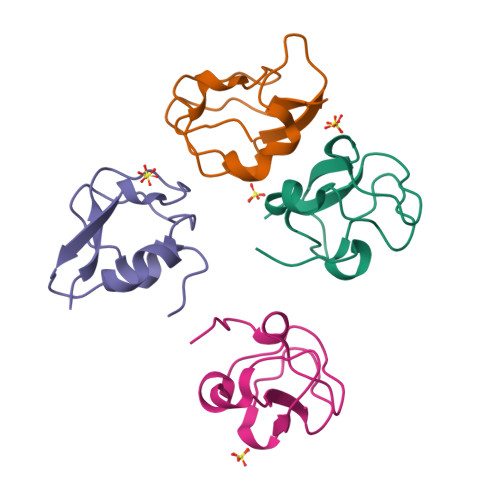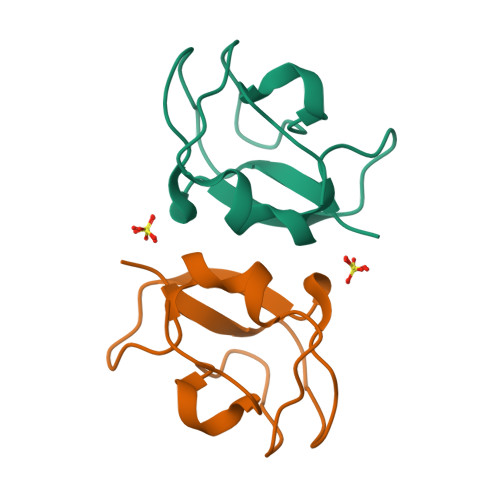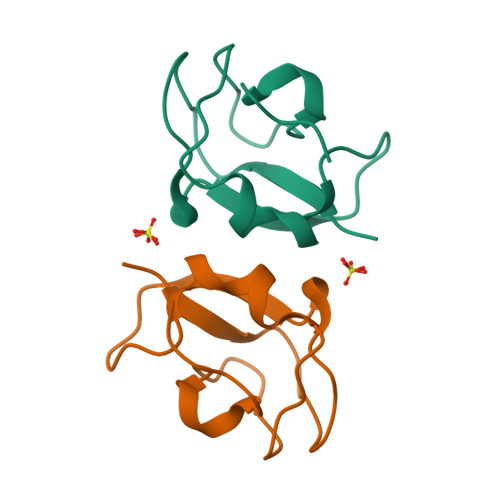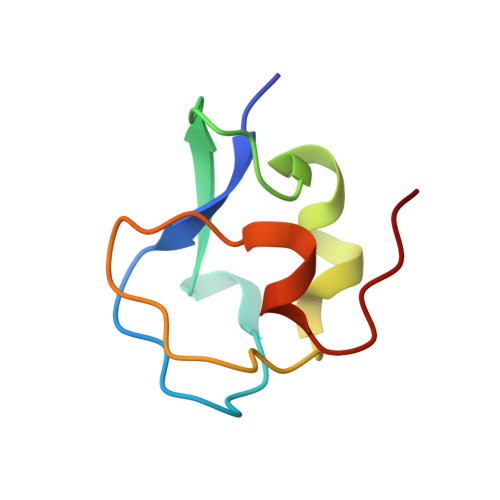Polypentagonal ice-like water networks emerge solely in an activity-improved variant of ice-binding protein
Mahatabuddin, S., Fukami, D., Arai, T., Nishimiya, Y., Shimizu, R., Shibazaki, C., Kondo, H., Adachi, M., Tsuda, S.(2018) Proc Natl Acad Sci U S A 115: 5456-5461
- PubMed: 29735675
- DOI: https://doi.org/10.1073/pnas.1800635115
- Primary Citation of Related Structures:
5XQN, 5XQP, 5XQR, 5XQU, 5XQV, 5XR0 - PubMed Abstract:
Polypentagonal water networks were recently observed in a protein capable of binding to ice crystals, or ice-binding protein (IBP). To examine such water networks and clarify their role in ice-binding, we determined X-ray crystal structures of a 65-residue defective isoform of a Zoarcidae -derived IBP (wild type, WT) and its five single mutants (A20L, A20G, A20T, A20V, and A20I). Polypentagonal water networks composed of ∼50 semiclathrate waters were observed solely on the strongest A20I mutant, which appeared to include a tetrahedral water cluster exhibiting a perfect position match to the [Formula: see text] first prism plane of a single ice crystal. Inclusion of another symmetrical water cluster in the polypentagonal network showed a perfect complementarity to the waters constructing the [Formula: see text] pyramidal ice plane. The order of ice-binding strength was A20L < A20G < WT < A20T < A20V < A20I, where the top three mutants capable of binding to the first prism and the pyramidal ice planes commonly contained a bifurcated γ-CH 3 group. These results suggest that a fine-tuning of the surface of Zoarcidae -derived IBP assisted by a side-chain group regulates the holding property of its polypentagonal water network, the function of which is to freeze the host protein to specific ice planes.
Organizational Affiliation:
Graduate School of Life Science, Hokkaido University, 060-0810 Sapporo, Japan.


















